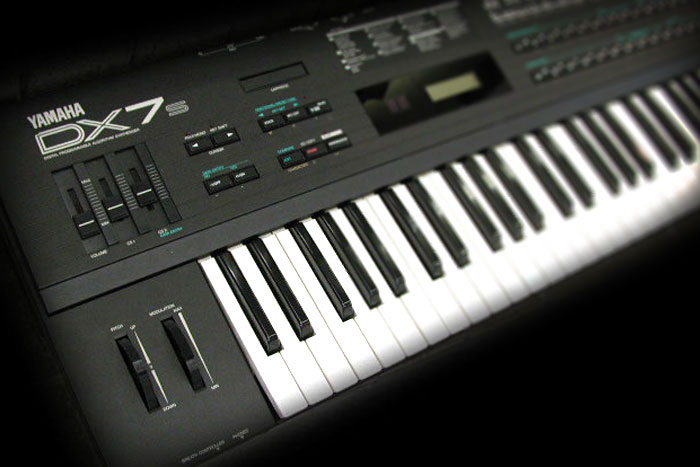
Frequency-Modulation Synthesis, or FM Synthesis for short, works differently than what we’ve talked about so far. It uses one wave to rapidly increase or decrease (modulate) the frequency of another, which creates entirely new frequencies that aren’t part of the first two.
Don’t worry if that’s not very intuitive; I’m going to break it down for you. Imagine a sine wave which has a constant pitch. It would just sound like a continuous tone.
Now imagine using another, very low frequency sine wave to control the first, making it go up and down in pitch. As the slow sine moves up, the pitch of the other would go up. As the slow sine goes down, the pitch you hear would go down.
It would sound like a siren. If you looked at it on a scope you would see the sine squishing and stretching as the frequency changed.
In this arrangement, the wave you actually hear is called the “carrier”. The wave that controls the pitch of the carrier is called the “modulator”. You never actually hear the modulator; you only hear its effect on the carrier.

Now start increasing the frequency of the modulator. The pitch of the carrier goes up and down faster, sounding more like a vibrato than a siren. Increase the modulator frequency even more and you get a really fast vibrato. Once the frequency of the modulator gets up into the audio range, that’s where interesting things start to happen. You stop hearing vibrato and start hearing new frequencies appear in your carrier. That’s the basis of FM synthesis.
The new frequencies are called sidebands, and they can appear above and below the carrier frequency. The number, frequency and amplitude of the sidebands are controlled by changing the ratio of the modulator frequency to the carrier frequency, as well as the amount of modulation. Evenly divisible ratios (2:1, 1:4, etc) tend to make harmonic sidebands, where non-even ratios (1.53242643:1) tend to create inharmonic sounds.
Now let’s look at some examples. We’ll start by looking at our carrier with no modulation so we can compare:
Pretty much we’re looking at a pure sine wave, which we know has no harmonics. Note the single spike on the spectrum analysis. Now let’s modulate the frequency of that sine wave with some different modulator-carrier frequency ratios:
We’re starting to see some sidebands appear. This combination gives us one above the carrier frequency.
Now we’re seeing sidebands appear above and below the carrier frequency, giving us a much richer timbre than our original sine wave.
There’s no rule that says the carrier and modulator must be sine waves. You can use any waves you want. The results would be as if you’d used several sine waves, each with a frequency corresponding to each harmonic in whatever waves you do use. You can imagine how easily you can get harmonically-rich waveforms with only a small number of oscillators using FM synthesis.
There is also no rule that says you can only have one modulator and one carrier. You can have multiple modulators modulating one carrier, one modulator modulating another one which then modulates two carriers, etc. There are many possible configurations, letting you create very complex timbres. You’re limited only by the hardware you’re using.

In subtractive synthesis, you start with a wave that has plenty of harmonics and selectively remove them with a filter to get the desired timbres. In FM synthesis, you get your different sounds by controlling the relative frequencies of the modulator and carrier. FM is good for creating sounds that are difficult to achieve with other types of synthesis, like metallic, bell or brass sounds. These sounds tend to be full of inharmonic overtones and it would take an unreasonable amount of equipment to generate them with subtractive synthesis.
FM synthesis is difficult to implement in an analog synthesizer since a small change in frequency can drastically change the timbre. It wasn’t really feasible until digital synths with rock-solid tuning came out in the 80s.
The Yamaha DX7 is probably the most well-known FM synthesizer. It calls each grouping of an oscillator, pitch envelope, amplitude envelope and amplifier an “operator”, but the basic concept is the same. It lets you group several different operators in various configurations of modulator and carrier. It even lets you use the envelopes to modify the frequency and amplitude of each operator so your sounds can change over time.
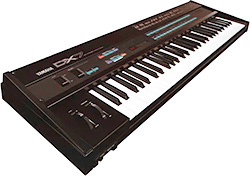
Technically the DX7 doesn’t use FM synthesis. It uses a slightly different scheme called Phase Modulation (PM) synthesis. In PM synthesis, the phase angle of the modulator is changed rather than the frequency.








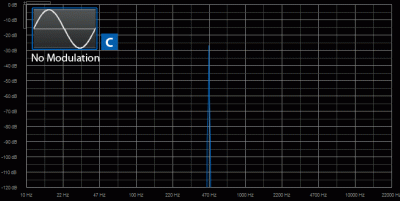

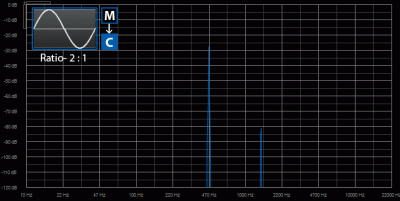

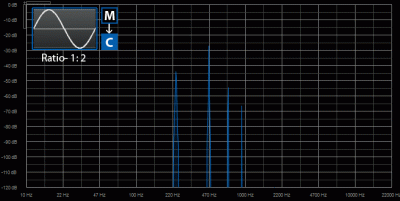

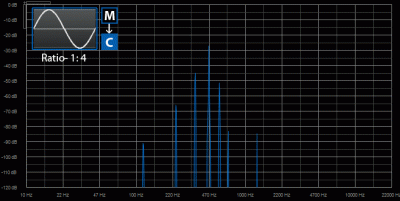










So the FM knob controls the frequency of the modulator? But then, doesn’t changing the octave or semi-tone knobs change the frequency as well? And what about playing different notes? Doesn’t that affect the frequency, and shouldn’t that affect the sound as you move up and down the keyboard?